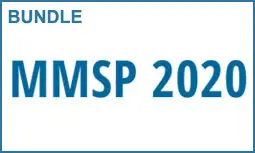Audio Inpainting based on Self-similarity for Sound Source Separation Applications
Dan Barry, Alessandro Ragano, Andrew Hines
-
Members: FreeSPS
IEEE Members: $11.00
Non-members: $15.00Length: 04:55
22 Sep 2020
Sound source separation algorithms have advanced significantly in recent years but many algorithms can suffer from objectionable artefacts. The artefacts include phasiness, transient smearing, high frequency loss, unnatural sounding noise floor and reverberation to name a few. One of the main reasons for this is due to the fact that in many algorithm, individual time-frequency bins are often only attributed to one source at a time, meaning that many time-frequency bins will be set to zero for a separated source. This leads to an impressive signal to interference ratio but at the cost of natural sounding resynthesis. Here, we present a simple algorithm capable of audio inpainting based on self-similarity within the signal. The algorithm attempts to use the non-zero bin values observed in similar frames as substitutes for the zero bin values in the current analysis frame. We present results from subjective listening tests which show a preference for the inpainted audio over the original audio produced from a simple source separation algorithm. Further, we use the Fréchet Audio Distance metric to evaluate the perceptual effect of the proposed inpainting algorithm. The results of this evaluation support the subjective test preferences.



